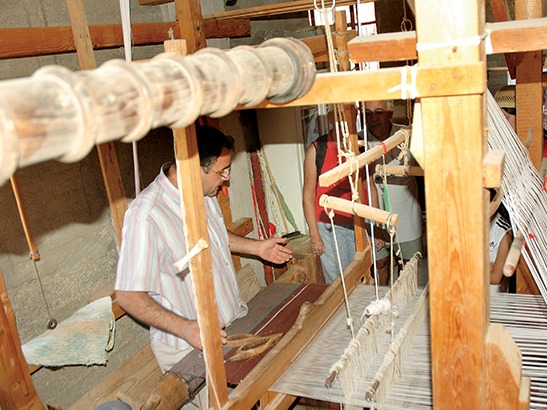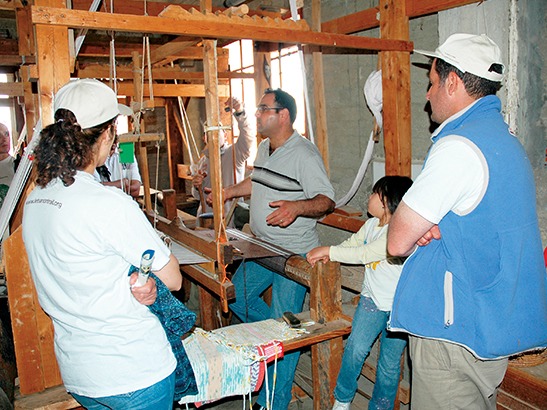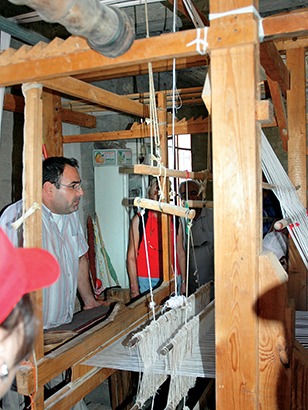For centuries Bedouins and mountain shepherds wore the abaya. Now, thanks to the talent of enterprising designers this garment has made its way into the high fashion scene. Traditionally a man’s square, generously cut outfit, the abaya served as cloak, blanket and coat. Today, hand woven abayas are as much a status symbol as they are worn to keep warm.

Among the many traditional activities still running throughout the country, abaya making is one of the most fascinating and time-honored, incorporating a piece of history in every one of its threads.
It is not common to find a traditional abaya weaver who still works the silk or wool the way our ancestors did. Nazih Baz grew up watching his grandfather make fabric and embroider it with silver and gold thread in the most captivating designs and techniques. His village, Baadaran, is famed for its weaving and combination of design and style.
In 1979, Baz inherited the family business. He manufactures abayas and other textiles using the century-old loom that requires a special technique he learnt from his grandfather. Baz can use up to 24 pedals to operate the weaving machine. Concentration, patience and taste are the three main ingredients needed to create an ideal product. The exertion of this activity became more than just work to Baz, who defines it as “music where each twine has a note of its own”.

Although he is a firm believer in maintaining tradition, Baz has started a creation of modern hand-made accessories such as wallets, cell phone cases, make up bags, jewelry boxes and more, designed for tourists as well as youngsters with reduced budgets.
Baz also owns a family guesthouse in Baadaran that offers accommodation to mountain hikers who wish to discover the rich flora and fauna of the Shouf.
Nazih Baz: +961 3 702 944

Article edited on November 15, 2021
Loading
